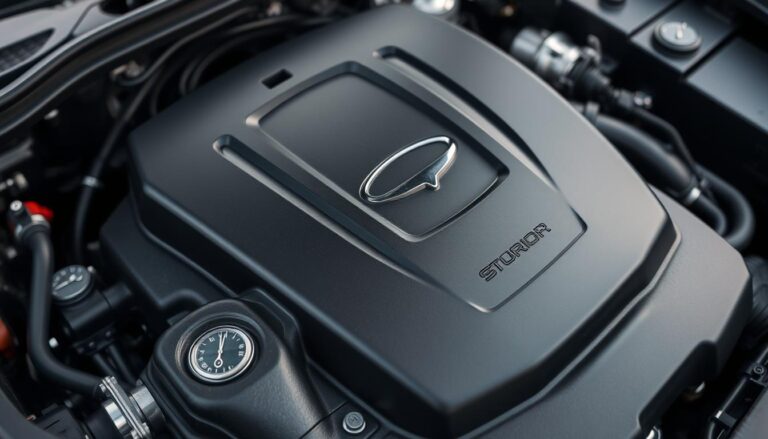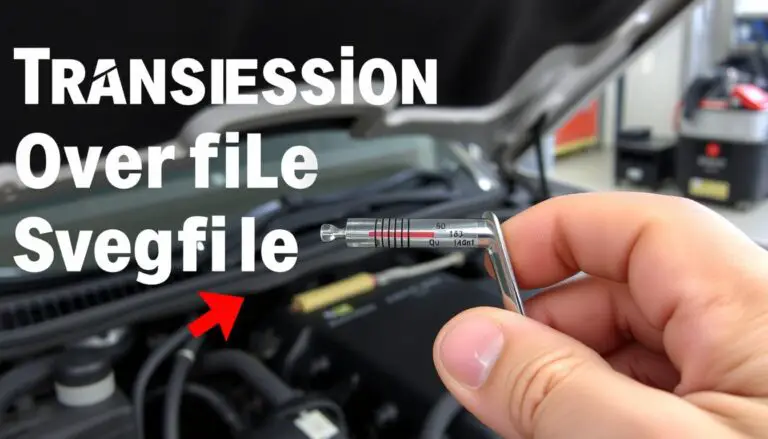Bearings are crucial components in modern machinery, enabling the smooth operation of various mechanical systems.
The importance of bearing technology cannot be overstated, as it directly impacts the efficiency, reliability, and lifespan of equipment across industries.
Understanding the different types of bearings and their applications is essential for engineers, technicians, and anyone involved in machinery maintenance or design.
Key Takeaways
- Understanding the role of bearings in machinery
- Exploring the various types of bearings and their uses
- Learning about advancements in bearing technology
- Discovering best practices for bearing maintenance
- Identifying the importance of bearings in different industries
The Fundamental Role of Bearings in Modern Machinery
In the realm of modern machinery, bearings play a pivotal role in ensuring the reliability and performance of mechanical equipment. Bearings are ubiquitous in machinery, from large industrial equipment to precision consumer electronics.
Basic Definition and Function
At its core, a bearing is a machine element that constrains relative motion to only the desired motion, and reduces friction between moving parts. The primary function of a bearing is to support a load and reduce friction between the load and other parts of the machinery.
Types of Bearings:
- Ball Bearings
- Roller Bearings
- Plain Bearings
Each type of bearing has its unique application and is suited for different kinds of loads and operational conditions.
| Bearing Type | Load Capacity | Friction Level |
|---|---|---|
| Ball Bearings | High | Low |
| Roller Bearings | Very High | Low to Moderate |
| Plain Bearings | Moderate | Moderate to High |
Economic Impact of Bearing Technology
The economic impact of bearing technology is significant, as it directly influences the efficiency, reliability, and cost-effectiveness of machinery across various industries. Advanced bearing technology can lead to substantial savings by reducing energy consumption and minimizing downtime for maintenance.
For instance, in the automotive industry, high-quality bearings can improve fuel efficiency and extend the lifespan of vehicles, thereby reducing overall maintenance costs. Similarly, in industrial manufacturing, bearings that are designed for heavy-duty applications can withstand harsh conditions, leading to increased productivity and reduced operational costs.
Historical Development of Bearing Technology
From ancient Egypt to modern precision technology, the evolution of bearings is a story of continuous innovation. The development of bearing technology has been a crucial factor in the advancement of machinery and mechanical systems.
Ancient Bearing Designs
The earliest recorded use of bearings dates back to ancient Egypt, where they were used in simple applications such as potter’s wheels. Early bearing designs were rudimentary, often consisting of wooden or stone components that reduced friction between moving parts.
As civilizations evolved, so did bearing technology. The ancient Greeks and Romans used bearings in various applications, including door hinges and water wheels. These early innovations laid the foundation for more sophisticated bearing designs in later centuries.

Industrial Revolution Advancements
The Industrial Revolution marked a significant turning point in the development of bearing technology. As machinery became more complex and widespread, the need for more sophisticated bearings grew. Precision engineering enabled the creation of ball bearings and other advanced designs that could withstand higher loads and speeds.
According to historical records, the first ball bearings were developed in the late 18th century. A brief history of ball bearings highlights the key milestones in their development, from ancient times to modern precision technology.
Modern Innovations in Bearing Technology
In recent years, bearing technology has continued to evolve, driven by advances in materials science and manufacturing techniques. Modern bearings are designed to be more durable, efficient, and environmentally friendly. Advanced materials such as ceramics and composites are being used to create bearings that can operate in extreme conditions.
“The development of new bearing technologies is crucial for the advancement of industries such as aerospace, automotive, and renewable energy.”
The future of bearing technology looks promising, with ongoing research into new materials, designs, and applications. As machinery continues to evolve, the demand for innovative bearing solutions will remain high.
A Complete Guide To Bearings: What They Are, Types, and Their Uses
Bearings play a vital role in modern machinery, and their diverse types cater to different applications. Understanding the various types of bearings is crucial for selecting the right component for specific industrial needs.
Ball Bearings
Ball bearings are one of the most common types of bearings, known for their versatility and wide range of applications. They are designed to support loads and reduce friction between moving parts.
Deep Groove Ball Bearings
Deep groove ball bearings are a subtype of ball bearings that can handle both radial and axial loads. They are widely used in automotive and industrial applications due to their high-speed capabilities and durability.
Angular Contact Ball Bearings
Angular contact ball bearings are designed to support combined loads and are particularly useful in applications requiring high precision, such as in aerospace engineering and high-speed machinery.
Roller Bearings
Roller bearings are another significant category of bearings, offering higher load-carrying capacity compared to ball bearings. They are used in applications where heavy loads are involved.
Cylindrical Roller Bearings
Cylindrical roller bearings are designed to handle heavy radial loads and are commonly used in industrial machinery and construction equipment.
Tapered Roller Bearings
Tapered roller bearings can support both radial and axial loads and are widely used in automotive wheel hubs and gearboxes.
Plain Bearings
Plain bearings, also known as sleeve bearings, are used in applications where simplicity and low cost are paramount. They are often found in household appliances and some industrial machinery.
Specialty Bearings
Specialty bearings are designed for unique applications, offering specific advantages such as high-temperature resistance or non-corrosive properties.
Magnetic Bearings
Magnetic bearings use magnetic forces to support loads, eliminating the need for physical contact. They are used in high-speed applications and precision machinery.
Ceramic Bearings
Ceramic bearings are made from ceramic materials, offering advantages such as corrosion resistance and the ability to operate at high temperatures. They are used in high-performance sports equipment and specialized industrial applications.

| Bearing Type | Subtype | Applications |
|---|---|---|
| Ball Bearings | Deep Groove Ball Bearings | Automotive, Industrial Machinery |
| Ball Bearings | Angular Contact Ball Bearings | Aerospace, High-Speed Machinery |
| Roller Bearings | Cylindrical Roller Bearings | Industrial Machinery, Construction Equipment |
| Roller Bearings | Tapered Roller Bearings | Automotive Wheel Hubs, Gearboxes |
How Bearings Work: Mechanics and Principles
The functionality of bearings is rooted in their ability to minimize friction and distribute loads effectively. This capability is crucial for the efficient operation of machinery across various industries.
Friction Reduction Mechanisms
Bearings reduce friction through several mechanisms. Ball bearings, for instance, use rolling elements to minimize contact between moving parts. The rolling motion significantly reduces the frictional force, allowing for smoother operation.
Lubrication plays a critical role in further reducing friction. By introducing a lubricant between the moving parts, bearings can significantly decrease wear and tear, enhancing their lifespan and performance.
Load Distribution and Force Management
Effective load distribution is another key aspect of bearing technology. Bearings are designed to manage various types of loads, including radial and axial loads. The distribution of these loads is critical for maintaining the operational integrity of the bearing.
| Bearing Type | Load Capacity | Application |
|---|---|---|
| Ball Bearings | High radial load capacity | Electric motors, gearboxes |
| Roller Bearings | High radial and axial load capacity | Heavy machinery, automotive |
| Plain Bearings | Variable load capacity | Simple machinery, household appliances |
The table above illustrates the different types of bearings and their load capacities, highlighting their suitability for various applications.
Current Applications and Industry Trends
The versatility of bearings is evident in their widespread use across various industries, from automotive to aerospace. As technology advances, bearings continue to play a crucial role in modern machinery, adapting to the specific needs of each sector.
Automotive Industry Developments
The automotive industry is one of the largest consumers of bearings, utilizing them in various components such as engines, transmissions, and wheel hubs. Modern automotive bearings are designed to withstand high speeds and loads, contributing to improved vehicle performance and fuel efficiency.
Electric vehicles (EVs) are driving innovation in bearing technology, with manufacturers developing bearings that can handle the unique demands of EV powertrains. For instance, bearings used in EVs are designed to reduce friction and improve efficiency, thereby enhancing the overall range and performance of the vehicle.
Aerospace Engineering Innovations
In the aerospace industry, bearings are used in critical applications such as engine components, landing gear, and flight control systems. Aerospace bearings are designed to operate under extreme conditions, including high temperatures and loads.
Advanced materials and manufacturing techniques are being used to develop bearings that meet the stringent requirements of the aerospace industry. For example, some aerospace bearings are made from high-strength, corrosion-resistant materials that can withstand the harsh conditions encountered during flight.
Manufacturing Equipment Advancements
Manufacturing equipment relies heavily on bearings to ensure smooth operation and minimize downtime. Bearings used in manufacturing equipment are designed to withstand heavy loads and high speeds, reducing wear and tear on machinery.
The use of advanced bearing technologies, such as ceramic bearings and hybrid bearings, is becoming more prevalent in manufacturing. These bearings offer improved performance and longevity, leading to increased productivity and reduced maintenance costs.
Consumer Product Applications
Bearings are also used in a wide range of consumer products, including bicycles, household appliances, and power tools. In these applications, bearings contribute to improved performance, reduced noise, and increased durability.
The demand for high-quality bearings in consumer products is driving innovation, with manufacturers developing bearings that are designed to meet specific application requirements. For example, bearings used in bicycles are designed to be lightweight and corrosion-resistant, while those used in power tools are designed to withstand high speeds and heavy loads.
Maintenance, Troubleshooting, and Future Outlook
Effective bearing maintenance is crucial for the longevity and performance of modern machinery. Regular maintenance not only extends the life of bearings but also prevents unexpected failures that can lead to costly downtime.
Modern Lubrication Technologies
Lubrication plays a vital role in bearing maintenance. Advanced lubrication technologies have been developed to improve bearing performance and longevity. These include:
- Synthetic lubricants designed for high-temperature applications
- Advanced grease formulations for improved lubrication retention
- Automated lubrication systems for consistent and precise lubrication
Diagnosing Common Bearing Failures
Despite best maintenance practices, bearings can still fail. Common signs of bearing failure include unusual noise, vibration, and increased temperature. Diagnostic techniques such as vibration analysis and thermography can help identify potential issues before they lead to catastrophic failures.
Preventative Maintenance Best Practices
Preventative maintenance is essential for maximizing bearing life. Best practices include:
- Regular inspections for signs of wear or damage
- Proper lubrication practices
- Alignment checks to prevent uneven stress on bearings
- Replacement of bearings at recommended intervals
Emerging Bearing Technologies
The future of bearing technology is promising, with emerging technologies set to revolutionize the industry. These include:
- Advanced materials for improved durability and performance
- Smart bearings equipped with sensors for real-time monitoring
- 3D printing technologies for customized bearing designs
As the industry continues to evolve, staying informed about the latest developments in bearing technology will be crucial for maintaining a competitive edge.
Conclusion
Understanding bearings is crucial for advancing in various industries, from automotive to aerospace engineering. This comprehensive guide has explored the fundamental role of bearings in modern machinery, their historical development, types, and applications.
By delving into the mechanics and principles behind bearings, we’ve uncovered the intricacies of friction reduction and load distribution. The current applications and industry trends demonstrate the evolving landscape of bearing technology, with innovations in lubrication, diagnostics, and preventative maintenance.
As we look to the future, emerging bearing technologies promise to further enhance performance and efficiency. For those seeking to deepen their knowledge, this guide serves as a foundation, providing a wealth of information on bearings and their significance in modern industry.
Whether you’re an engineer, manufacturer, or simply someone interested in the intricacies of machinery, this comprehensive guide to bearings offers valuable insights into the world of precision engineering.
FAQ
What are bearings and how do they work?
Bearings are mechanical components that reduce friction between moving parts, enabling smooth operation and reducing wear. They work by allowing relative motion between two or more parts while minimizing friction and supporting loads.
What are the main types of bearings?
The main types of bearings are ball bearings, roller bearings, plain bearings, and specialty bearings, including magnetic and ceramic bearings.
What are the applications of ball bearings?
Ball bearings are used in a wide range of applications, including automotive, aerospace, and consumer products, due to their ability to handle high speeds and loads.
How do I choose the right bearing for my application?
Choosing the right bearing involves considering factors such as load capacity, speed, operating temperature, and environmental conditions. It’s essential to consult with bearing manufacturers or experts to determine the most suitable bearing for your specific needs.
What is the importance of lubrication in bearing maintenance?
Lubrication is crucial in bearing maintenance as it reduces friction, prevents corrosion, and removes contaminants. Proper lubrication can significantly extend the lifespan of bearings.
What are some common causes of bearing failure?
Common causes of bearing failure include improper lubrication, contamination, misalignment, and excessive load or stress. Regular maintenance and monitoring can help prevent or diagnose these issues.
What are some emerging trends in bearing technology?
Emerging trends in bearing technology include advancements in materials, such as ceramics and advanced composites, as well as innovations in bearing design, like magnetic bearings and smart bearings with integrated sensors.
How do bearings impact the automotive industry?
Bearings play a critical role in the automotive industry, supporting the smooth operation of engines, transmissions, and wheel hubs. Advances in bearing technology have contributed to improved fuel efficiency, reduced emissions, and enhanced vehicle performance.
What is the role of bearings in aerospace engineering?
Bearings are used in various aerospace applications, including aircraft engines, gearboxes, and landing gear. They must meet stringent requirements for reliability, durability, and performance under extreme conditions.
How can I extend the lifespan of my bearings?
To extend the lifespan of bearings, it’s essential to follow proper maintenance practices, including regular lubrication, monitoring, and replacement when necessary. Additionally, selecting the right bearing for the application and operating conditions is crucial.


